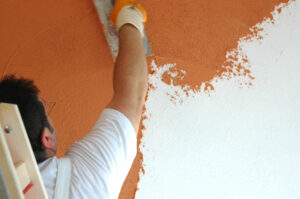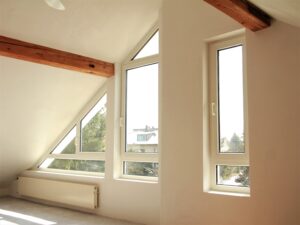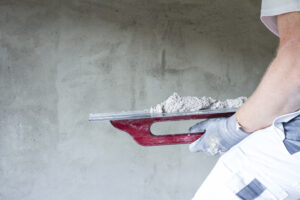Not only since Corona it has been clear that a healthy body is less susceptible to pathogens. In addition to a healthy diet, one of the most important factors is “fresh air”. Our everyday life nowadays plays out for the most part in closed spaces away. That is why the quality of the indoor air is a crucial health factor. Odors, germs, bacteria, pollutants and air humidity are just a few factors that influence the indoor climate and the indoor air quality.
If we ensure that the air we breathe is as free of chemical substances as possible, we make a decisive contribution to ensuring that our defense organs do not have to deal with these avoidable chemicals. Free from these pollutant factors, the immune system can concentrate better on its task of defending itself against pathogens and healing. In this way we help our immune system to fight off diseases caused by viruses, bacteria, inflammation or aggressive cells and ensure gentle healing processes.
On average, we consume around 4 kg of food per day through eating and drinking. Our body breathes air in at around 15 kg per day.
- According to official figures, 20-30 million people in Germany suffer from allergies.
- the German Dermatological Society (DDG) states that 2 million children and 2.5 million adults suffer from atopic dermatitis every year.
- The number of people living in Germany MCS – Multiple Chemical Sensitivity sick grows. According to official estimates are scarce 3 million people have severe MCS.
- Building-related illnesses are increasing.
The sources for dangerous and allergenic substances indoors are very different. In addition to furnishing items and everyday chemicals such as cleaning agents and detergents, building materials, paints, wall structures, insulation materials, adhesives, floor coverings, etc. can use the Causes of indoor air pollution be.
Components from furniture and building materials that are harmful to health are particularly dangerous for small children, the chronically ill, those who are sensitive to chemicals and the elderly.
Symptoms such as headache, dizziness, insomnia, breathing problems or eye irritation can be signs that pollutants are present in the indoor air. Especially if these symptoms mainly occur indoors, but not outdoors or outdoors only in a weakened form.
The assumption that building materials, paints and plasters that are offered on the market are fundamentally harmless to health is a mistake.
On September 8, 2009 the Registration authority for individual chemical substances and compounds of substances, the American Chemical Society that the 50 millionth individual chemical substance was registered on that day. A further 61 million chemical compounds were also registered at this point in time. Since then, more than 10,000 new registrations of chemicals have been made worldwide every day. Over 150 million individual chemical substances and compounds have now been reported.
150,000,000 individual chemical substances
The industry thus has an unimaginable pool of chemical substances at its disposal to produce products of all types and with different requirements and to bring them onto the market.
You don’t need to be a mathematician to realize that only the smallest part of these substances has been examined for their effect on the human organism. Building materials, paints, varnishes and plastering materials are for the most part chemicals – compositions of different fillers and chemical additives.
The effects of individual substances, mixtures of substances and preparations affect complex processes. If different building materials, components and auxiliary materials are installed in the interior, they react differently to one another. Their emission behavior can cause complicated processes such as hydrolysis, chemolysis and thermolysis processes.
Comprehensive full declaration for consumers
In the indoor air, individual substances combine to form so-called chemical cocktails. This is how the air acids in the room are formed. The guidelines for indoor air hygiene of the Federal Environment Agency demands that the sum of volatile substances in permanently used rooms does not exceed 1 mg per cubic meter of room air. Building biologists even demand a significantly lower value of 0.2 to 0.3 mg.
But we as consumers do not find out which individual substances these materials are made up of. From our point of view, this is an intolerable situation.
On the one hand, as so-called necessary “health protection measures”, we are repeatedly banned indoors and should not be “unnecessarily” outside. On the other hand, the government is unable to oblige the industry to disclose the ingredients of your interior products to the consumer.
Our immune system is stressed by indoor pollutants, so good breathing air in our home is an important factor for sustainable health protection. This is why the chemical industry and, above all, the manufacturers of building materials, plasters and paints must finally be obliged to make a comprehensive, full declaration.
So shouldn't we pay more attention to the quality of the air we breathe in our home? It makes sense to ensure good indoor air quality.
When it comes to indoor air quality in our home and our health, we shouldn’t leave anything to chance. It is not enough to trust advertising messages or simply relying on any label. Of course, there are now a large number of labels with which building materials are awarded. These can be used at the
Be helpful and supportive in the purchase decision. But these do not in any way replace the full declaration.
The labels are usually based on emission measurements under laboratory conditions with a constant air exchange rate with a supply of pure air and constant room conditions that have nothing to do with the conditions in actual practical use in inhabited buildings. The air exchange in the test chamber runs constantly, so that every 2 hours the entire room air content is completely exchanged or replaced by ultra-pure air.
When manufacturers use the Disclosure of all ingredients refuse or disguise them if they want to sell sham packages. A building material manufacturer who does not disclose the ingredients has something to hide.
Also question our claims. We are convinced that we will meet your questions and requirements. Learn more about our ingredients here.

How do pit lime surfaces design healthy interiors?
Sump lime is not just sump lime. There are considerable differences in quality on the market here and some slaked









